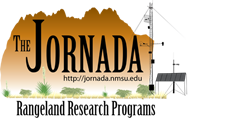Magnitude Shifts in Aeolian Sediment Transport Associated with Degradation and Restoration Thresholds in Drylands [1]
| Title | Magnitude Shifts in Aeolian Sediment Transport Associated with Degradation and Restoration Thresholds in Drylands |
| Publication Type | Journal Article |
| Year of Publication | 2025 |
| Authors | Webb, NP [2], Wheeler, B [3], Edwards, BL [4], Schallner, JW [5], Macanowicz, N [6], Van Zee, JW [7], Courtright, EM [8], Cooper, B [9], McCord, SE [10], Browning, D [11], Dhital, S [12], Young, KE [13], Bestelmeyer, BT [14] |
| Journal | JGR Biogeosciences |
| Volume | 103 |
| Issue | 3 |
| Abstract | Vegetation change in drylands can influence wind erosion and sand and dust storms (SDS) with far‐reaching consequences for Earth systems and society. Although vegetation is recognized as an important control on wind erosion and SDS, the interactions are not well described at the landscape level or in the context of dryland ecosystem change. The transition of sites from one ecological state to another (e.g., grassland to shrubland) is typically associated with changes in the composition, cover, and structure of vegetation, which influence drag partitioning and wind shear velocities that drive aeolian sediment transport. Here, we quantify the magnitude and direction of aeolian sediment transport responses to ecological state change in the northern Chihuahuan Desert and identify thresholds associated with state transitions. Our results show aeolian sediment mass flux (Q) increased from ∼1 to 10 g m-1 d-1 in historical grassland with scattered shrubs to ∼10–100 g m-1 d-1 following shrub invasion and decline in perennial grass cover to ∼100–10,000 g m-1 d-1 in shrubland following complete grass loss. The magnitude shifts were associated with critical perennial grass cover thresholds governing nonlinear increases in Q across ecological state transitions. Grass recovery in shrubland reduced Q to rates similar to those in historical grasslands—a multiple order of magnitude reduction. Our results show that crossing degradation and restoration thresholds between alternative ecological states can have a profound effect on the magnitude and spatiotemporal variability of aeolian sediment transport and primacy in determining patterns of wind erosion and dust emissions in vegetated drylands. |
| DOI | 10.1029/2024JG008581 [15] |








